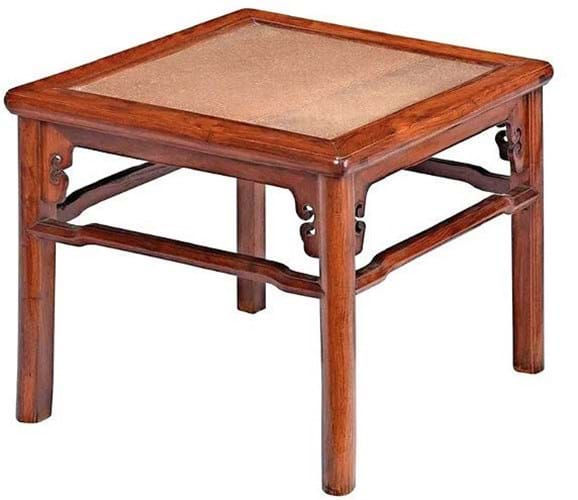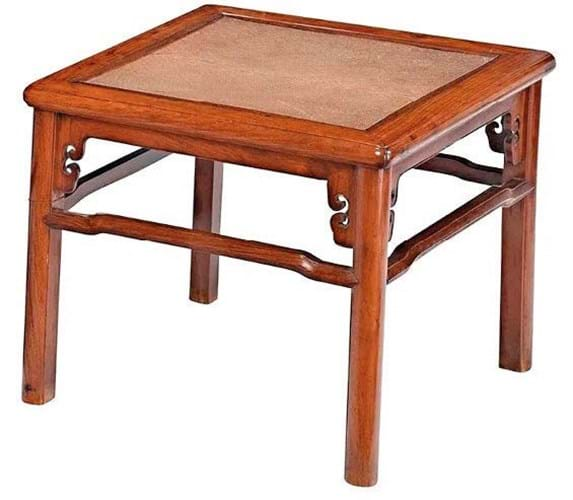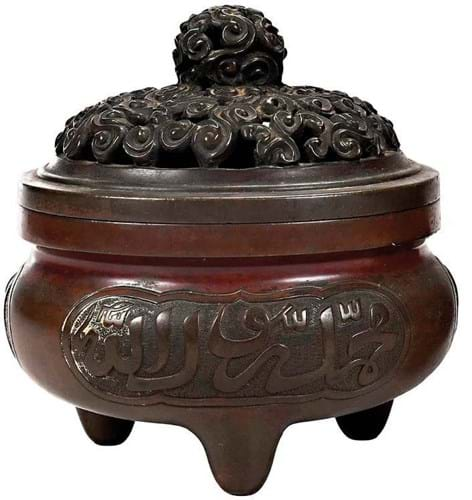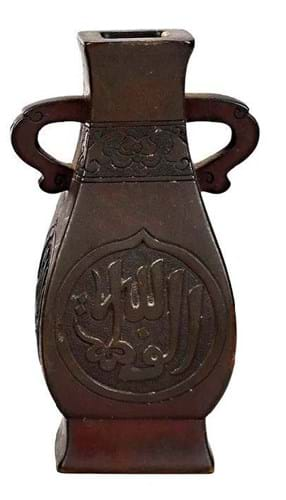
One of a pair of late Ming huanghuali stools, $235,000 (£195,000) at Brunk Auctions.
The pieces had been given to the museum by collectors Price and Elaine Rogers in the late 1990s. Most had labels suggesting they had been bought in China in the 1950s.
A pair of stools fashioned in the revered hardwood huanghuali – probably in the late Ming periods – raced away from a guide of $1500- 2500 to sell for $235,000 (£195,000).

One of a pair of late Ming huanghuali stools, $235,000 (£195,000) at Brunk Auctions.
The ranking of seats in China was hierarchical. Chairs were most important and reserved for the master of the house and senior guests on formal occasions. Stools, which typically followed contemporaneous table designs, were used in more relaxed gatherings.
The design and construction of this pair suggest a 17th century date. According to a label fixed to one, they were purchased in China (Beijing) in 1953 from dealer Caroline Bieber and pictured in the influential book she co-authored with the American orientalist George Kates, Chinese Household Furniture (1948).
Modest estimates on the Rogers collection of furniture led to a number of similar results. Sold at $120,000, many times the $5000 top estimate, was a Qing huanghuali cupboard fitted with shelves and two drawers with paktong alloy hardware and a dragon carved serpentine skirt.

One of two late Ming or Qing ritual bronzes made for the Islamic market, $230,000 (£191,000) at Brunk Auctions.
From the collection of ‘a Southern gentleman’ came two late Ming or Qing ritual bronzes – a censer and an incense tool vase – made either for export to the Islamic market or for a Chinese mosque. They follow traditional local forms embellished with Arabic calligraphy.

One of two late Ming or Qing ritual bronzes made for the Islamic market, $230,000 (£191,000) at Brunk Auctions.
Like many bronzes of the 17th century and later they have apocryphal marks for the Xuande emperor (1425-35), the 5th ruler of the Ming dynasty whose short reign was viewed as something of a golden era by subsequent generations. In particular, it was a time of relative prosperity for Islam in China with many influential Muslim advisers, eunuchs and envoys serving in the imperial court.
Today, as many have been lost or destroyed, these ‘Islamic market’ wares are much admired among the Muslim-Chinese minority. Just how admired was seen when these two vessels, estimated at $600-800, hammered at $230,000 (£191,000).














